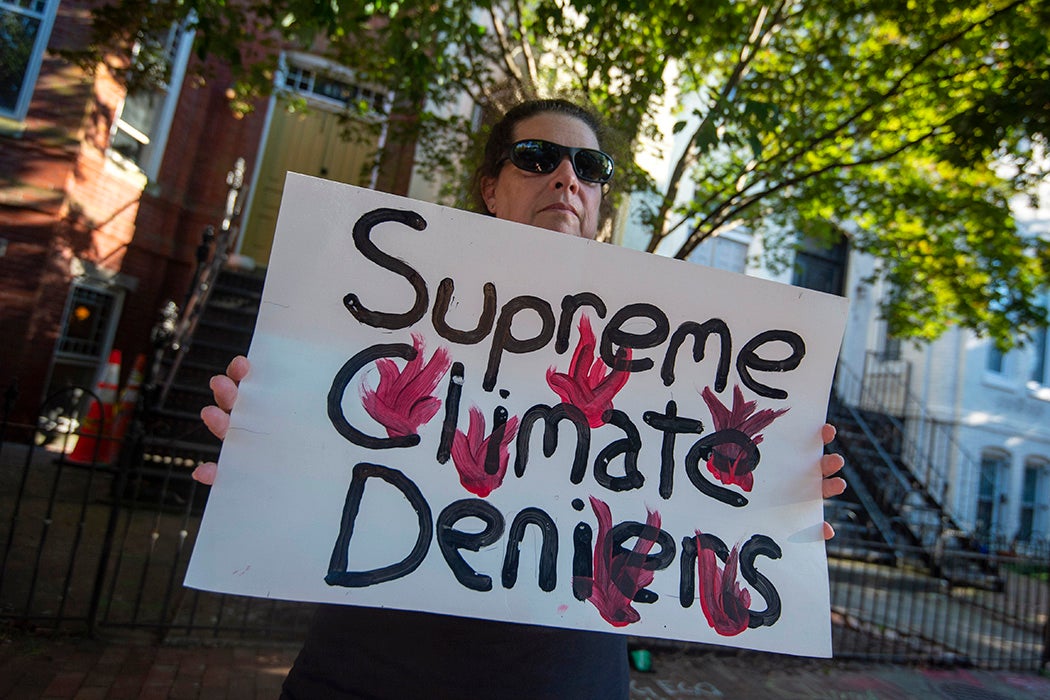The Supreme Court majority has limited the EPA’s ability to regulate greenhouse gasses in a major blow against the regulatory state. Regulations concerning the environment, labor, health, food safety, and water safety, among others, are all now at risk. Yet, just a week before, the same judges declared government can regulate the bodies of people who become pregnant and force them to give birth.
This seeming paradox of freedom for corporations and repression for citizens is actually not new in American history.
The birth of the regulatory or administrative state is usually dated to the Progressive Era and New Deal. Scholar Susan J. Pearson pushes it back further, noting “Dispossession of Native Americans created the Indian Office, one of the first federal administrative agencies; the Fugitive Slave Act created some of the first administrative courts; the Freedmen’s Bureau was the first federal ‘welfare’ agency; provision of veteran’s benefits created the template for the gendered welfare state and its control and surveillance of women’s sexuality.”
In the decades before the turn into the twentieth century, laissez-faire ruled. But this libertarian ideology wasn’t totalizing. There was, in fact, a “tremendous flurry” of state regulation at every layer of government. Before 1897, for instance, the “states and the federal government had the authority to enact regulations as long as they could be justified as necessary to protect the public’s health and welfare.”
Of course, somebody had to define what was meant by protection. Demands for such regulation came from organized citizens and the politicians they elected. Who advocated for what mattered. “Far from distinguishing between public and private interests,” Pearson argues, regulation reached “deep into the most intimate spheres of social and personal life in order to shape a social order around Protestant morals and hierarchies of race and gender.”
“If we turn our eyes from the arenas usually privileged in stories of statebuilding—social welfare provision and labor regulation—and look to the regulation of morals, sexuality, marriage, and race relations, then the postbellum years appear as an era of expanded government.”
The state being built “was based less on equal protection or individual rights” than on the policing of morality. The nation’s abandonment of Reconstruction and equal citizenship for the formerly enslaved and their descendants was mirrored in a postbellum vision of the Civil War as a triumph against sin, not slavery. Other aspects of sin—drinking, obscenity, non-observation of the Sabbath—needed a super vice-squad alliance of the state and moral reformers to combat it.
The epitome of this alliance was the 1873 Comstock Act, a federal law that banned “obscene” materials, including information about birth control, from the US mail and made the head of the New York Society for the Suppression of Vice the special postmaster for censorship. Other examples of detailed moral policing by states include Kansas forbidding newspapers to write about illicit relationships and Michigan telling its citizens they couldn’t swear in front of women and children. The sale of contraception was banned in various states, too; even married couples couldn’t buy it in Connecticut until 1965.
Southern states used police power “to construct race itself,” via miscegenation laws and the one-drop rule. As government codified and encouraged intraracial marriage—stamping out Mormon polygamy and reshaping Native American gender relations in the West, for instance—interracial marriage was outlawed in many states for nearly a century.
Weekly Newsletter
“The multi-pronged use of federal and state power to shape morality and marriage demonstrates how the laissez-faire story occludes the government’s pervasive willingness to use law to structure social relations,” writes Pearson. Laissez-faire’s hands-off approach to business and its plutocratic masters turned out to mesh with moral authoritarianism.
The Supreme Court may have voided labor-protection legislation in the Lochner decision (1905), but as Pearson shows, courts “were only too happy” to allow states to “use their power to offer protection to women, children, and other dependent classes.” Of course, “protection” could “slide into paternalism and provide cover for coercive policies.” The result was liberty for elites, and control for the rest.







